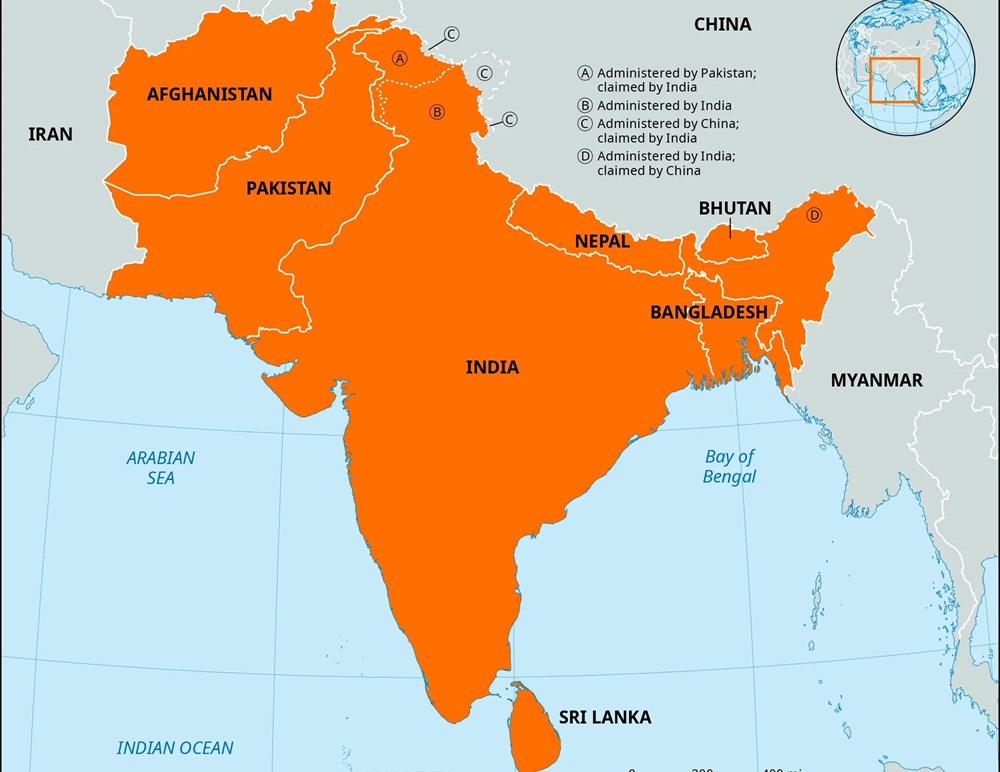The ongoing war in Ukraine has undergone several phases of strategic and operational transformation since February 2022. While early stages were marked by rapid manoeuvres, airborne thrusts, and attempts to seize Kyiv and other political centres, the subsequent period evolved into entrenched positional warfare characterised by attritional tactics, firepower dominance, and the progressive destruction of logistics chains. By late 2024 and into 2025, the Donbas theatre, particularly in the Donetsk region, reemerged as the principal focus of Russian operational effort. Within this region, the town of Pokrovsk has become a critical strategic objective. Its significance is rooted not merely in geography but in its role as a logistical, command, and manoeuvre hub supporting Ukrainian defence networks in eastern Ukraine.
Pokrovsk occupies a pivotal position along key transport corridors that facilitate Ukrainian reinforcement and sustainment across the Donbas frontline. Its capture would disrupt Ukrainian defensive cohesion, weaken the integrity of lateral movement along the front, and enable Russia to consolidate territorial gains. Therefore, it becomes imperative that the strategic significance of Pokrovsk be assessed in terms of whether its seizure would constitute a watershed moment in the domination of Donbas, and that the planning and execution of the Russian offensive be analysed, including the use of converging pincer movements and small-unit assault tactics.
Strategic and Operational Context
The Donbas region has long held central importance in Russian military and political planning. Beyond its symbolic value as a historically contested zone, the region possesses industrial infrastructure, resource density, and transportation networks that are crucial to the sustainment of broader war efforts. Since 2014, Kramatorsk and Sloviansk have served as Ukrainian military administrative centres and hubs for defensive coordination. Pokrovsk links these centres with the wider Ukrainian logistic hinterland, making it a keystone for sustaining the broader defensive belt in Donetsk Oblast.
The loss of settlements such as Avdiivka, Bakhmut, and Chasiv Yar imposed cumulative strain on Ukraine’s defensive posture. Each loss reduced depth, disrupted fire control networks, and forced the redeployment of overstretched brigades. Pokrovsk, therefore, represents a critical junction in the remaining defensive infrastructure; its fall would accelerate the fragmentation of Ukrainian battlefield cohesion in Donetsk.
Importance of Pokrovsk in the Wider Donbas Campaign
Logistic and Transportation Hub. Pokrovsk lies at the intersection of multiple road networks that support Ukrainian lateral and rear-area logistics. It has served as a central location for the reception and dispatch of supplies, ammunition, medical evacuations, and troop rotation. The loss of the town would force Ukrainian supply convoys to rely on longer and more vulnerable detours, increasing logistical friction and reducing the ability to reinforce threatened sectors rapidly.
Command and Coordination Node. The town has hosted staff facilities, communication nodes, and staging areas for Ukrainian units. Its capture would complicate command and control structures, potentially forcing Ukrainian headquarters further west and reducing the responsiveness of coordinated defensive actions.
Psychological and Political Symbolism. The series of Russian advances in Donbas has created a psychological burden on Ukrainian morale and political leadership. Pokrovsk, as one of the last major urban barriers before Kramatorsk and Sloviansk, holds symbolic value. Its loss would reinforce the perception of Russian momentum and might influence the dynamics of external military support.
Would the Capture of Pokrovsk Be a Watershed Moment?
The fall of Pokrovsk would not immediately conclude the conflict in Donbas nor guarantee total Russian dominance. However, it would constitute a major operational inflexion point. It would undermine Ukrainian defensive flexibility, accelerate attritional pressures, and establish conditions favourable to continued Russian advances.
If Russia consolidates control over Pokrovsk, Ukrainian forces in the region would likely be compelled to conduct phased withdrawals toward more defensible terrain clusters further west. This process would entail the loss of prepared fortifications, the risk of encirclement in intermediate settlements, and additional strain on operational reserves. In this sense, Pokrovsk’s fall would function less as a singular breakthrough and more as a catalyst for a broader contraction of Ukrainian defensive lines.
How Capture of Pokrovsk Enables Future Russian Projection

PC: Russia Matters
Reduced Supply Line Vulnerability. A key determinant of operational endurance is the security of supply routes. Russian control of Pokrovsk would shorten lines of communication and minimise exposure of logistic convoys to long-range Ukrainian strike systems.
Staging Base for Further Advances. The town offers staging space for the pre-positioning and rotation of mechanised formations. From Pokrovsk, Russian forces would have more favourable axes of advance toward highly strategic cities such as Kramatorsk and Sloviansk.
Disruption of Ukrainian Operational Reserves. By constraining lateral mobility for Ukrainian forces, Russia can increase the cost and difficulty of reinforcing sectors under pressure. This would allow Russia to impose operational dilemmas across a wide frontage.
Russian Offensive Planning and Operational Design
The Russian offensive toward Pokrovsk exhibits features of a deliberate, phased, and attritional operational framework: –
Shaping by Firepower. Before ground movements, Russian forces have employed sustained artillery bombardments, drone-coordinated strikes, and precision-guided munitions to degrade Ukrainian defensive positions.
Fixing Attacks Along the Line. Concurrent assaults in adjacent sectors have forced Ukraine to retain significant combat power away from the main axis of advance.
Converging Pincer Movement. Russian forces have pursued a multi-axis approach designed to envelop Pokrovsk from the north and south, isolating Ukrainian units and threatening encirclement.
Employment of Small Assault Groups. Russian infantry tactics have shifted toward decentralised, platoon and squad-level infiltration teams supported by UAV reconnaissance and localised artillery fires. These units move through gaps in defensive lines, establish footholds within urban sectors, and pave the way for mechanised exploitation. This method reflects tactical learning derived from earlier urban battles. Instead of leading with armour, Russian forces now rely on well-coordinated small-unit advances to probe defences, apply pressure, and identify weak points.
Conclusion
Pokrovsk’s strategic significance lies in its function as a logistical, administrative, and manoeuvre hub for Ukrainian defence in Donbas. Its capture would materially degrade Ukrainian operational cohesion and enable Russia to consolidate gains and prepare follow-on offensives. While not decisive in isolation, the fall of Pokrovsk would likely mark a major turning point in the regional balance of power, and it could influence both Ukrainian strategic decision-making and external support dynamics. The Russian offensive toward Pokrovsk demonstrates adaptive operational planning, emphasising attrition, encirclement, and small-unit infiltration tactics. The outcome of the battle will shape not only the military landscape of the Donbas but also the political and strategic trajectory of the wider conflict.
Title Image Courtesy: ISW
Disclaimer: The views and opinions expressed by the author do not necessarily reflect the views of the Government of India and the Defence Research and Studies






